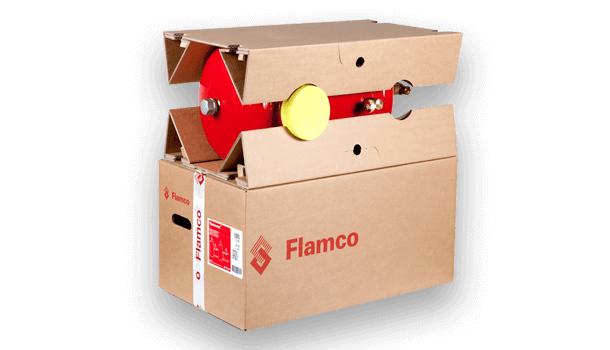Plastic Container Manufacturer Excellence: Crafting Solutions for You
Plastic Container Manufacturer Excellence: Crafting Solutions for You
Blog Article
Efficient Industrial Recycling Solutions for Lasting Packaging: A Comprehensive Overview
That's where this detailed guide on efficient industrial recycling solutions for lasting product packaging comes in. By exploring crucial locations such as packaging material option, designing for recyclability, applying reusing facilities, working together with recycling companions, and monitoring and measuring recycling success, this guide will certainly furnish you with the knowledge and tools needed to make educated choices and drive favorable change within your company. Whether you're a product packaging expert, sustainability supervisor, or just interested in the subject, this guide will provide valuable insights and techniques to help you browse the world of lasting packaging.
Product Packaging Material Selection
The option of packaging products plays an important role in making certain the sustainability of industrial recycling remedies. The option of materials is vital in minimizing ecological impact and taking full advantage of recycling effectiveness when it comes to sustainable packaging. Choosing the appropriate materials can aid decrease waste generation, preserve resources, and promote a circular economic situation.
One important element to think about in product packaging material choice is recyclability - industrial metal packaging. Products that can be quickly reused and incorporated back into the manufacturing cycle are liked. Materials like cardboard, paper, glass, and certain types of plastics can be recycled several times without shedding their high quality. On the other hand, materials that are hard to reuse, such as blended plastics or non-recyclable compounds, can produce challenges for the reusing procedure and may finish up in incinerators or garbage dumps.
An additional factor to consider is making use of naturally degradable and renewable products. Product packaging made from sustainable sources, such as plant-based plastics or biopolymers, can aid minimize reliance on fossil gas and mitigate climate change. Furthermore, eco-friendly materials damage down normally over time, minimizing the accumulation of waste in land fills.
Moreover, the weight and quantity of packaging materials should be reduced to reduce transport expenses and power usage. Lightweight materials not just call for less sources during manufacturing but likewise add to decrease carbon exhausts throughout transportation.
Designing for Recyclability
Product packaging developers ought to prioritize the use of products that are extensively accepted for reusing and have actually established reusing frameworks. Materials such as glass, aluminum, and specific kinds of plastic, like Family pet and HDPE, are generally reused and should be preferred over products that are pricey or hard to reuse.
One more vital factor to consider in making for recyclability is the elimination of unnecessary components or products. By lessening the variety of layers, coatings, and extra parts, packaging can be made less complex and simpler to recycle. Additionally, developers need to aim to minimize making use of blended products, as they can make complex the recycling process.

Implementing Recycling Facilities
Effective execution of reusing facilities is crucial for the success of commercial recycling solutions. Without correct infrastructure in location, the reusing process becomes ineffective and inefficient, impeding the general goal of sustainable packaging.
To carry out recycling framework effectively, a number of key elements require to be thought about. There need to be an efficient collection system that assists in the separation and collection of recyclable products. This can include marked recycling containers in public areas, as well as partnerships with waste administration business for curbside pick-up and sorting.
As soon as accumulated, the recyclable products require to be transported to recycling centers in a prompt way. This needs effective logistics and transport networks, guaranteeing that the products get to the ideal facilities without hold-up.
At the reusing facilities, progressed sorting and handling modern technologies must be in place to divide different kinds of products successfully. This consists of using automated sorting equipments, optical scanners, and hand-operated sorting techniques.
Additionally, there must be a durable market demand for recycled materials. This can be accomplished through partnerships with makers and industries that use recycled materials in their manufacturing procedures. Producing a stable market for recycled materials incentivizes the recycling market and promotes the circular economic situation.
Teaming Up With Recycling Allies

One key facet of teaming up with reusing partners is the facility of clear interaction channels. It is essential to develop open lines of communication to facilitate the exchange of details, updates, and feedback. This allows both celebrations to stay notified regarding the progress of recycling campaigns and attend to any kind of challenges or concerns that may arise.
Additionally, partnership can include joint initiatives in applying and making reusing programs. Recycling companions can give important insights and advice in creating reliable collection systems and figuring out the most suitable recycling innovations. By working together, services and reusing companions can maximize the reusing process and lessen waste.
Additionally, cooperation can prolong past the functional elements of recycling. It can likewise include advocacy and education and learning efforts. By joining pressures, businesses and reusing partners can raise recognition concerning the significance of blog recycling and promote the adoption of lasting product packaging techniques amongst customers and various other stakeholders.
Monitoring and Measuring Recycling Success
To make sure the efficiency of commercial reusing options and the success of sustainable packaging goals, it is crucial for services and their recycling partners to develop a comprehensive system for monitoring and measuring recycling success (industrial metal packaging). Gauging and tracking reusing success enables organizations to analyze the impact of their reusing efforts, identify areas for renovation, and established meaningful targets for future development
One way to track recycling success is via making use of information collection and analysis devices. By accumulating information on the quantity of product packaging waste produced, the portion of waste that is recycled, and the kinds of products being recycled, companies can get important understandings into their reusing efficiency. This data can after that be evaluated to determine fads, patterns, and locations of ineffectiveness.
Another crucial aspect of tracking and determining reusing success is establishing clear and standardized metrics. This allows organizations to contrast their performance against market standards and track their development gradually. Metrics such as reusing rates, waste diversion prices, and greenhouse gas emissions can offer a quantitative action of an organization's recycling success.

Final Thought
To conclude, applying effective commercial recycling remedies for sustainable packaging calls for careful consideration of product packaging material selection, making for recyclability, applying reusing framework, collaborating with recycling companions, and monitoring and measuring reusing success. By including these methods, services can add to a much more environmentally-friendly and sustainable approach to packaging, lowering waste and advertising the circular economic climate.
By checking out crucial locations such as product packaging product choice, making for recyclability, applying reusing framework, teaming up with reusing companions, and tracking and gauging reusing success, this guide will certainly equip you with the expertise and tools required to make enlightened choices review and drive positive adjustment within your company. Packaging developers should prioritize the use of products that are extensively approved for recycling and have actually established recycling facilities.Partnership with recycling partners is essential for the effective execution of industrial recycling solutions and the accomplishment of sustainable product packaging goals. By joining forces, companies and reusing partners can elevate understanding regarding the relevance of reusing and promote the adoption of lasting product packaging practices useful site among consumers and various other stakeholders.
By collecting data on the amount of product packaging waste generated, the percent of waste that is reused, and the kinds of materials being reused, organizations can obtain beneficial understandings right into their recycling efficiency.
Report this page